#also thusly there is mark fisher
Text
the thing to know about the rdscr fanbase and the girls themselves is that they are older millennials such as myself and many of you and the cultural milieu is this sort of criticism of 2007 feminism with a nostalgia for its culture--similar project at the center of ldr!--which is fascinating and also appealing but failed in its execution (with lana--maybe still working, tbd)
#femcel#santi was doing a counterfeminist from the inside art world critique AT THE TIMEw#which mia was and wasn't doing but was always said to have been doing#also thusly there is mark fisher
8 notes
·
View notes
Text
Clarome
(this is an info post I published on one of my aminos some time ago. Only small grammarly adjustments have been made lol)
Real life backstory: Clarome was created around 2014 or so if I'm not mistaken, so a while ago. When I was still a child. I had gotten into warrior cats around those years and was very inspired. I however did not start it based purely on warrior cats, but a dream I had about it and a few characters from that. Based on this dream I made four different clans. I also decided leaders for them and deputies and so on, and introduced my friends to it and boy, it really became a huge part of our childhoods
In-story backstory: so Clarome was essentially a whole other dimension about an alternate earth where humans died of extinction in the stone age. This is not a realistic theory of what our world would've become if humans died out like that however. In fact, be ready to suspend your disbelief alot.
In this world, animals evolved into two different categories. Sapient and primitive. The sapient ones have two forms, anthro and feral (imagine furries) which they can change between at will. Some prefer to live their lives in the feral form completely, but this only means they'll walk on four legs and be non anthropomorphic like animals in our world. It doesn't affect their psychology at all. They are on the same intelligence level as humans and can be afflicted with the same neurological or mental disorders as humans. They're able to speak and feel and so on. These can be any animals you can ever imagine. Birds, reptiles, mammals, even giant bugs sometimes, but we'll get into that later.
The primitives however are mainly prey animals like rabbits, squirrels, some small bird species and so on. These are just like the ones in our world. And they can't become anything else. They're not given any agency of their own and are essentially prey. However where things get weird, is that a rabbit can be a sapient or a primitive. Just by looking at them you can't always tell. Sapient and primitive animals can't be in the same family and they pretty much will not breed with each other. It's treated as the same kind of taboo as sleeping with animals is in our world. It'd be like human going with a chimp.
Geography: Clarome is a large island roughly shaped like a mitten, with much tinier islands speckled around it. It's mostly varying levels of densely growing forest terrain, though it does change what kind of forests. There's also some areas with alot of cliff and hills, surrounded by forests. Most notable places being the Lightcliff and Earthquake Valley (which is a large canyon area). Both have historical significance. There are a few nice sandy/gravely beaches around but mostly it's just oops - water.
There's a few lakes in Clarome, none very large in the grand scheme of things. And multiple rivers.
-The clans-
🖤🐍Rattleclan🐍🖤
Originally founded by rattlesnakes, unsurprisingly, who gathered in a pine/spruce forest and made camp for themselves among the rocks. Snakes are one of the only species in Clarome who's anthro forms differ, they do not gain limbs of any kind. They can however stand taller and grow larger in their anthro form to better interact with the world around them. As time went on, Rattleclan gained alot of feline members who got along with the snakes due to the hissing ability and the versatile nature of cats in general. Due to this there's a Rattleclan originated species of snakecats, felines that have varying amounts of scales on their bodies, bigger fangs and snaketails. Later on various birds also joined Rattleclan, mostly predatory birds due to the fact that the non predatory ones have trouble getting along with any other species for obvious reasons.
In present day, Rattleclan population is more mixed but primarily consists of felines, reptiles, snakes and a few canines. Foxes are also very common.
•Rattleclan has a cave system at their disposal which they use as either a dungeon for intruders and codebreakers, or as a stock for various items.
•Unlike the other clans, Rattleclan has nighttime patrols
•Due to what their population consists of, during some especially cold winters part of, or the entirety of Rattleclan may go into hibernation. It usually lasts for as long as they feel it's too cold.
•Daughters/sons of the leader(s) are always referred to as Princes/Princesses of Rattleclan
•The Rattleclan emblem/symbol that represents them to the others, and in prophetic visions from Starclan, is a grinning black rattlesnake
🌧️🦎Rainclan🦎🌧️
Originally founded by waterlizards, which is a species originating from Clarome. It was founded just by a river, and so alot of it's population also consists of riverside/waterborne birds such as ducks, geese, and other Fisher birds. It too hosts alot of felines, with the few canines here and there. As well as any other reptiles and amphibians that can swim. It's mostly dominated by Waterlizards. It's part of their code that any and all members of Rainclan must be able to swim, and it's seen as a disgrace to be afraid of water or to not be able to swim. Fishing is an essential skill in this clan, even favored over dryland hunting sometimes. Sometimes. Portals are sometimes found underwater in the river.
•Rainclan has at least the second best stock of herbs due to their location.
•They're considered to own most of the territory along the river, all the way up to a small waterfall. The river eventually leads out of Clarome and into the ocean
🌳🐺Valleyclan🐺🌳
It was originally founded by canines, mostly wolves. The clan resides in a sheltered lowering in the landscape, defined as a valley. It's deep in the forest, where mostly leafed trees and bushes grow, and densely. As the wolves settled in, the area was originally populated by rabbits and hares. There were battles and discourse about the ownership of this plot of land, until the rabbits and wolves could finally peacefully unite into valleyclan. It did take a while to get used to living with your natural predator/prey though. Valleyclan is and usually has been one of the biggest clans of them all, also holding a large area of the forest for themselves. They've ran into border disputes with the others often, and have a bloody history with Rattleclan, which was fortunately settled by a needed change of leaders. Due to Valleyclans terrible line of leaders being all parent-child, it caused the other clans to make it so the leader decides their successor, and it isn't automatically signed to a blood heir or a deputy. They too, made it this way, but were the last ones to do so.
Valleyclan contains the most canines of any kind, foxes, forestborne birds, sapient prey animals like rabbits and hares, a little reptilians and even bears, deer, moose and wild horses at some point, but those have been so rare that they aren't seen much these days.
•Valleyclan has often suffered from overpopulation.
•They like to think of themselves as the center of the forest and often try to help or otherwise get involved into the goings of other clans. They tend to initiate the meetings between all the clans/their leaders
🌈💐Colorclan💐🌈
Second newest of all the clans at the moment. Originally founded by a (sparkle)cat and his wife and they just built it up from there, taking in anyone with a good spirit and unique self expression. They came in a little later into the area where the rest of the clans live in, which caused some discourse. Colorclan has the most diverse selection of animals and mixed creatures out of all the rest. It's also in their genetic code to be extremely bright and colorful and straight up wacky. They don't follow some of the same conventions as the rest and are often seen as the "Childish" and "Pathetic" clan of the bunch. They're very creative in their culture and a prominent part is the ability to make paint and fur dye. Not everyone is taught this but it's highly valued, and they use this paint to often mark territories and do general customization. Singing and songs is also a part of their culture
🥀💚Toxic-clan💚🥀
Newest of all the clans, Toxic clan was founded by a rather infamous exile, Morsoclaw and his best friend (named Knife-eye at the time). Followed thereafter by Morsoclaws wife(at the time) Skullrose who was a medic in Rattleclan, + an abandoned kitten they found and nursed back to health, + Knife-eye's girlfriend Fairytail. They later gained more numbers from various other exiles and clan members who didn't find their place elsewhere, as well as rogues. It's still the smallest of the clans, but has a very strong sense of unity, freedom and loyalty. Members can take more fluid roles than in the other clans, such as camp janitor, gatherer, full-time Queen and so on. Members are allowed to change their names themselves at any point in their lives if they so choose, without the involvement of the leader (Referred to as boss in this clan). It's also considered a horrendous act and punishable if someone names their child or warrior a name that purposely demeans or mocks them.
Toxic-clan aims to go against the rest of the clans in traditions and roles and thusly be better
#Lore#Clarome#fanclans#My ocs#My worlds#Embarrassing childhood ocs check#Not able to let go and gaining comfort from said childhood ocs check
5 notes
·
View notes
Photo

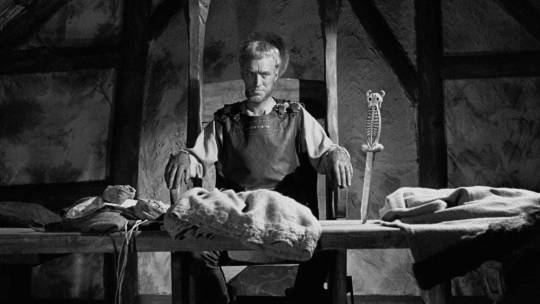
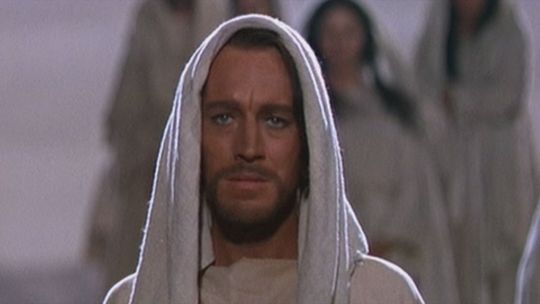
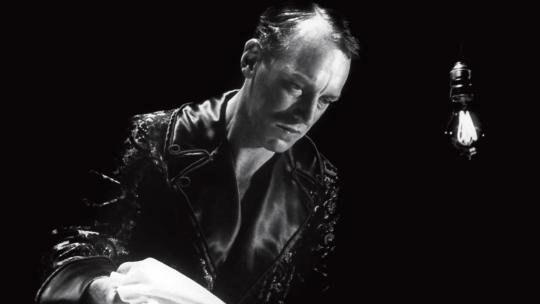

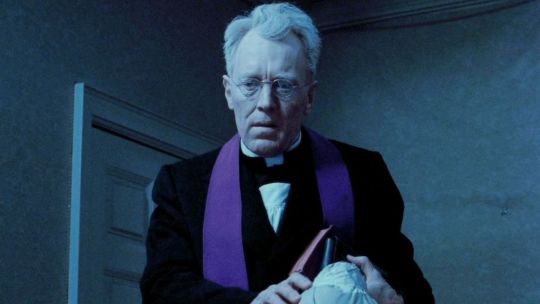
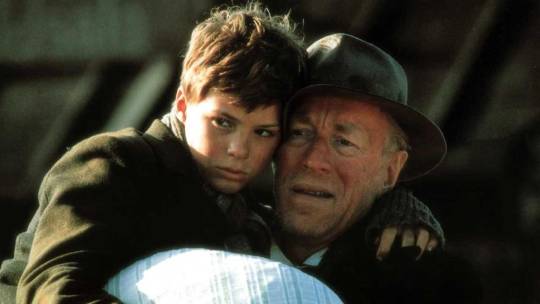
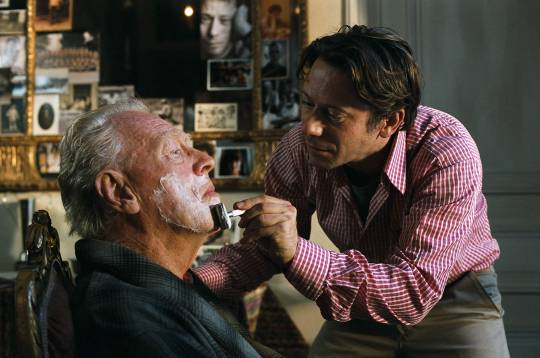


I shall remember this moment: the silence, the twilight, the bowl of strawberries, the bowl of milk. Your faces in the evening light. Mikael asleep, Jof with his lyre. I shall try to remember our talk. I shall carry this memory carefully in my hands as if it were a bowl brimful of fresh milk. It will be a sign to me, and a great sufficiency.
Born Carl Adolf von Sydow, Swedish actor Max von Sydow passed away yesterday at his home in southern France. With a career spanning eight decades, the towering and lanky von Sydow distinguished himself in Hollywood, usually seen playing villains through the 1970s and ‘80s. But he was perhaps most widely acclaimed for his work in Swedish films with directors Ingmar Bergman and Jan Troell – the former, shortly before his death in 2007, described the actor thusly: “Max, you have been the first and the best Stradivarius that I have ever had in my hands.” The role that catapulted von Sydow to international fame was as Antonius Block, a returning Crusader who plays chess with Death (often parodied and referenced), in Bergman’s The Seventh Seal. In recent years, von Sydow described himself as an actor without a home nation, in due part due to his globetrotting film career and his sons attending American universities.
An actor of incredible gravitas and often embodying existential angst and resolve simultaneously, von Sydow fulfilled a lifelong passion that began when he saw a production of A Midsummer Night’s Dream as a schoolboy in his hometown of Lund. Younger viewers and gamers may know him best as Three-eyed Raven from Game of Thrones and the voice actor of Esbern in The Elder Scrolls V: Skyrim, respectively. In life, one of the greatest screen actors of the last century touched audiences in countless ways that few non-Americans and non-British actors could, no matter the project.
Nine of the films Max von Sydow appeared in are shown above, and are listed below (left-right, descending):
The Virgin Spring (1960, Sweden) – directed by Ingmar Bergman; also starring Birgitta Valberg, Gunnel Lindblom, and Birgitta Pettersson
The Greatest Story Ever Told (1965) – directed by George Stevens; also starring Dorothy McGuire, Charlton Heston, José Ferrer, and Telly Savalas
Hour of the Wolf (1968, Sweden) – directed by Ingmar Bergman; also starring Liv Ullmann, Gertrud Fridh, Georg Rydeberg, Erland Josephson, and Ingrid Thulin
The Emigrants (1971, Sweden) – directed by Jan Troell; also starring Liv Ullmann, Eddie Axberg, and Monica Zetterlund
The Exorcist (1973) – directed by William Friedkin; also starring Ellen Burstyn, Lee J. Cobb, Kitty Winn, Jack MacGowran, Jason Miller, and Linda Blair
Pelle the Conqueror (1987, Denmark/Sweden) – directed by Bille August; also starring Pelle Hvenegaard, Erik Paaske, and Bjørn Granath
The Diving Bell and the Butterfly (2007, France) – directed by Julian Schnabel; also starring Mathieu Amalric, Emmanuelle Seigner, Marie-Josée Croze, and Anne Consigny
Star Wars: The Force Awakens (2015) – directed by J.J. Abrams; also starring Harrison Ford, Mark Hamill, Carrie Fisher, Adam Driver, Daisy Ridley, John Boyega, and Oscar Isaac
The Seventh Seal (1957, Sweden) – directed by Ingmar Bergman; also starring Gunnar Björnstrand, Bengt Ekerot, Nils Poppe, Bibi Andersson, Inga Landgré, and Åke Fridell
#Max von Sydow#The Seventh Seal#The Force Awakens#The Exorcist#Ingmar Bergman#The Virgin Spring#The Greatest Story Ever Told#Hour of the Wolf#Pelle the Conqueror#The Diving Bell and the Butterfly#Star Wars#in memoriam
3 notes
·
View notes
Text
Rehabilitating cyberpunk: Altered Carbon, past critiques, and a call to nature.

Note: Some spoilers head.
There is no need to fear or hope, but only to look for new weapons.
Gilles Deleuze
We’ve seen a re-emergence of cyberpunk over the past few years. From the sequel to Blade Runner, Blade Runner 2049, to the upcoming videogame Cyberpunk 2077, the genre appears to be making a come-back. What might cause a genre like Cyberpunk, distinguished by its cassette-futurist aesthetic, its grittiness, and overall negative view of the future, to re-emerge? While it reached its zenith in the 90s, it largely faded from popular view throughout the 2000s. It is important here to distinguish between the ‘original’ cyberpunk genre, a deeply ambitious project to produce societal and cultural change, and the cyberpunk aesthetics we see today. As someone extremely interested in these ideas and imaginations of the future, cyberpunk is infinitely fascinating, and though I revel in its new popularity, I couldn’t help but notice a strong thematic shift away from cyberpunk’s original ambitions and towards a much more vapid and generalised aesthetic. Most recently I found myself puzzled by Netflix’s adaptation of Altered Carbon. Season one seemingly had everything and remained largely true to its genre’s root. This all changed with season two, by bringing out an undercurrent that had been present throughout the first season without being made a central plot point: that of technologically induced immortality, and humanity’s ‘natural’ state of existence. In this post, I want to look at this thematic shift in the genre, and its implication to the wider cyberpunk project. I also want to consider the implications of ‘declawing’ a subversive genre as it re-emerges a mere simulacrum of itself. This is by no means unique to cyberpunk as a genre, but I wish to use it here a more general example, with the show Altered Carbon more specifically as a case study. It is time to investigate how a subversive genre is culturally rehabilitated.
As a genre, cyberpunk has its roots in the 1980s and can be said to have been a reaction against the corporate aesthetics of the 1980s and 1990s. It arose as a form of cultural critique against the global-unity-through-consumerism-narrative that gained traction around this time and took off after the fall of the USSR in 1991. William Gibson’s 1984 novel Neuromancer is widely credited with solidifying the themes, tropes, and aesthetics of cyberpunk, though it is by no means the first cyberpunk work created; Ridley Scott’s 1982 Blade Runner comes to mind. Some cultural theorists have argued that the most important aspect of the genre, and why it gained such a large and diverse following, stems from it being set in the future. Typically, historical novels critique contemporary society through the lens of the past, whereas cyberpunk imagined a future through which it critiqued the present. Cyberpunk was thus unfettered by needing to be framed in the past allowing it to simultaneously appear hopeless and dystopian, while offering hope for the future – as what it portrayed could still be chaged.
Though I can’t give a complete and detailed rundown here (this video does a good job of that already) it was cyberpunk’s flexibility to be a type of roadmap for the future, that both broke down barriers and allowed a contextualisation of the present that made it both an ambitious and powerful project. French philosopher Gilles Deleuze once wrote of technology, that “there is no need to fear or hope, but only to look for new weapons”, that technology was neither an oppressive or liberating force, but simply a force of change. What we needed was to look for new ways to operate within a social, cultural, economic, or political framing changed by further technological development. As a result, cyberpunk authors, artists, and scholars often looked to break down barriers, in a double sense: through interdisciplinary and shared work, but also in the work itself. Such a breaking down of barriers is exemplary in the image of the cyborg. The cybernetically enhanced human – part human, part machine – became a powerful image for how we can consider ourselves, and played with the very concept of the ‘human’ as a specific thing. As anthropologist Aaron Parkhurst points out, there’s a deeply ingrained idea that the body is a sacred entity in itself, and as a result, joining the body with anything external (e.g. digital technology) corrupts it; makes it ‘unnatural’. This distinction is fickle, of course, and is fundamentally challenged by the image of the cyborg. As Donna Haraway argues in her seminal work A Cyborg Manifesto, that our sense of belonging and affinity ought to come not from sameness, but through differences.
People already suggested I watch Netflix’s Altered Carbon while researching my master’s dissertation, as it appeared very relevant to the research I was, and still am, interested in. As a disclaimer, what I cover here is the Netflix adaptation of Altered Carbon, I have not read the novel published in 2002, so I, therefore, can’t comment on that. The discrepancies in the show are most evident in Season 2, but first, we must understand the central technology in this universe: the ‘stack’. Stacks are disks inserted into your neck shortly after birth, and stores your consciousness. Through the stacks, humanity has invented its own immortality. Despite such technological developments, however, all’s not well in the world. As this is cyberpunk, corporate greed, corruption, and social strife are all widespread. This brings us to the rebellion. Led by Quellcrist Falconer, this revolutionary gang is not so much against the aforementioned social strife and hardship, but instead seek to undo the stacks, to undo immortality.
This is exemplary of the thematic and tonal shift that has, for lack of better words, rehabilitated cyberpunk as a genre. Falconer’s reasoning, condensed, goes thusly: the stacks were invented for good, the world, as it is right now, is not good, in fact, it appears to have gotten worse and multiplied human suffering across several lifetimes. It is the stacks that are the problem, or: it is humanity’s foray into the ‘unnatural’ state of technology-induced immortality that is at fault. We have, in a nutshell, our unnatural state of being to blame for the strife, and must, therefore, seek to return to nature in order to again find an acceptable balance. This ignores one key issue, however: the social structures that were present before the stacks have themselves been amplified by the technology. From Falconer’s perspective, what she wants to return to is not a time when there was no suffering, but rather to a time where she was ignorant of it.
Seen from this perspective, Falconer’s revolutionary project is a remarkably conservative one, though I’m not sure this was at all intended. But more nefariously, by pointing to humanity’s foray into a state of unnaturalness as the focal point of all the badness in the universe, it implies that the structures present prior to its invention are themselves in balance with this imagined state of nature. In other words, the social hierarchies, economic injustices, and political repression are painted as being natural. Through this naturalness they are implied to be if not something good, merely something morally acceptable. The themes that cyberpunk set out to critique has folded back on themselves, and it suddenly defends what it once criticised and rejects what it once embraced.
Mark Fisher, in his book Capitalist Realism, argues that neo-liberal capitalism’s apparent longevity, despite its tendency towards economic crisis and social strife, is rooted in its ability to repurpose critique against the system, incorporate the critique on face-value, and by extension ‘declawing’ it. It is worth noting that this is not uique to the cyberpunk genre, as Fisher writes that most, if not all, cultural modes are often repurposed in this way. By producing pop-culture that appears to be critiquing the system as we consume it like a commodity – participating in the system – we buy not only entertainment but more specifically we consume moral relief. The paradox, thus, is that by partaking in the system we wish to critique we trick ourselves into feeling as if we have critiqued the system, leading to a sense of empty fulfilment. My favourite raccoon-turned-philosopher Slavoj Žižek puts this in even starker terms, with Starbucks. By paying more for a cup of coffee, but being told that part of the excess we’re spending goes towards fair trade coffee we are not simply buying the coffee, but we’re buying moral relief.
In this sense, resistance itself becomes central to the system, ironically because there are always new (and pre-packaged) battled to be waging. How would this relate to technology? And more specifically: technology today? The rise of modern cyberculture is itself rooted in the countercultural movement of the 1960s and 70s, and our collective ideas of technological progress hinge in ideas that technology must fundamentally be liberating, a remarkably subversive ideal. We’re getting more and more used to living in a world where the likes of Facebook, Google, or other major corporations carry out data breaches, leak data, lose data, sell data, try to influence our lives, politics, and so on. How our lived realities function is changing. Thus, reinventing a genre subversive to its core (and why a genre needed to be re-invented rather than something new emerging entirely is another interesting discussion, relating to Mark Fisher’s ideas of cultural hauntology. I’ve written something, but not completely related to this here), but shifting the focus away from the socioeconomic system and debate of technology vs. nature fulfils both the need for resistance but also serves to declaw the potential such resistance may have altogether. In the end, Altered Carbon sends a message that it’s not the political system in which they exist that is the problem, but rather technology; and even then it is not that we are going to be convinced to stop using Facebook any time soon.
Selected references
FISHER, M. 2009. Capitalism Realism: Is there no alternative? London: Zero Books.
TURNER, F. 2008. From Counterculture to Cyberculture: Stewart Brand, the Whole Earth Network, and the rise of digital utopianism. Chicago: University of Chicago Press.
DELEUZE, G. 1992. Postscript on the Societies of Control. October 59, 3–7.
HARAWAY, D. 2014. Anthropocene, Capitalocene, Chthulucene: Staying with the Trouble. Anthropocene: Arts of Living on a Damaged Planet (Presentation).
ŽIŽEK, S 2012 A Pervert’s Guide to Ideology (transcript/subtitles).
0 notes
Text
Music Review: Oneohtrix Point Never - Age Of
Oneohtrix Point Never Age Of [Warp; 2018] Rating: 3/5 “Time begins to emit a scent when it gains duration; when it is given a narrative or deep tension; when it gains depth and breadth, even space.” – Byung-Chul Han “One has to become a cybernetician to remain a humanist.” – Peter Sloterdijk That thirst, that desire. To present us multiple worlds that work indirectly, circuitously. To create sounds as sensing machines — shredding machines. To wander in a liminal or in-between space both fleeting and graspable, like the tangible heaviness of air on a humid day that fades after rain. Or fog lingering on the mirror after a hot shower. Or the dizzy feeling when blood rushes to your head after getting up too quickly. Age Of overflows with moments like that. Of caught between the between. Of experiencing two emotions at once. Of those that are twin-headed, two-hearted, bivalved. Connected, disconnected; utopian, dystopian. Even after multiple listens, the songs on Age Of have a strange not-yet quality built into how you access them; they still possess an airy, weightless, featherlike, and withdrawn quality, unable to reveal themselves completely, working through a hiddenness more than an exposure. They act sloppy, in an excessively casual manner, pockmarked and oozing with inconsistencies and anomalies, like the human body, and, more broadly, like humanness. They want to eat your brains, like “We’ll Take It” or throw you down the elevator shaft, like on “Warning.” But sometimes they wrap you in a warmth that only fairy tales can vivify, like on “Toys 2” or “RayCats.” In other words, for the first time, we’ve got a Oneohtrix Point Never record that’s a bit all over the place conceptually. It’s erratic. It doesn’t come with a grand concept. It eats its cake and vomits it up, too. There’s nothing wrong with the erratic quality; because of it, timelines and simulacra crisscross all about the record. A cyborg-sublime beckons for you to experience it. So do vast, elaborate, unnameable infrastructures ordinarily invisible to ourselves. (But for what purpose do these infrastructures come to fruition? And how do we experience them?) A historicity — straight from the timbre’s mouth — pours forth. Like the harpsichords on the opening track: how they conjure visions of knights throwing serfs into the jaws of moat-crocs for fun; cherubim circulating around the heads of choir singers; sculptures at rest in well-manicured, royal gardens. Woe be on us if we forget about all that Gruyere eaten in awesome grottos all about the Swiss Alps. Then, with one wave of a magic wand, the historicalness of the music vanishes and 2018 looms in. We’ve been here before. If Garden of Delete was at odds with the male body’s transformation during its adolescence, Age Of is at odds with the permanency of genre and the permanency of composition, hence why it sounds more like a compilation than an album. Case in point: OPN’s performances operate iteratively, treating his songs as fluidly mobile parts able to be assembled and disassembled as he sees fit, thusly confounding the frozenness of his records. Performing live, he allows sound to wiggle and jiggle; to fatten or soften or inflate or deflate; to become violently infected — via gut bacteria or nuclear sludge or botched field recordings — thereby changing the route and direction they take, and especially their behavior; to lead to other sounds that weren’t, and oftentimes couldn’t, be there, but now are, and by the constitution of their being, highlight another possibility, another window onto another landscape, another selfie from another angle, another spell cast in the Magic: The Gathering duel, another tweet written from the cryo-chamber. At its best, Age Of tiptoes around the idea of being completely one with timeliness. At its worst, it can’t get the motor up and running; the dopamine never transfers. It’s why, in a recent interview with The New York Times, he can admit that “things have to become other things, or else I feel unsatisfied and/or like a con man.” It’s also why, in that same interview, he says he “like[s] to take chaos and structure it so it has a kind of comprehensible pulsation.” Iteration keeps OPN’s dream of a comprehensible pulsation alive and healthy. The chaos and impermanency spawn cyborg-cowboys, alien-cowboys, grunge-guys sitting in dive bars wondering when’s liftoff. (Cue in the deadbeat bass riff of “The Station” for those dudes.) It’s why he favors anti-automation over quantifiability and, by doing so, forms an extreme resistance toward social media’s quantification of our desires and capitalism’s need to accelerate. The whole world can fuck with that resistance. Mark Fisher was right about capitalism when he wrote that it’s “an abstract parasite, an insatiable vampire and zombie-maker, [and] the living flesh it converts into dead labor is ours, and the zombies it makes are us.” Fuck being a zombie! Age Of suggests. Anti-automation also favors privacy over publicity, recuperation over speed. Because to be a musician — and I can add here, to be alive — is to view invisibility as a superpower. Music doesn’t have to participate in the language game of life. We are alive on Age Of’s aesthetic battlefield, in the trench of the unshackled referent, between the limits of timbre and the limits of how malleable that timbre is; between OPN’s ability to use the tools in his toolbox and his ability to hear something that isn’t audible yet has a toward-being-audible quality. It’s like a music that you can describe but not play, that nobody could play because of its impossibility, that can only be conceived through the temptation of just how out of reach it is. Again, we’re in that in-between. Because the album can’t be one complete thing, Age Of is its own archenemy; its own princess stranded in a high castle; its own climb up the Holy Mountain. A radical incompleteness haunts it. Moreover, a radical incompleteness completes it. Like when a relationship is a thing but not really a thing. Or when nothing goes as planned. Or our browser history: the mark of ourselves that we leave behind on devices. Or overheard conversations, at once ours and not ours. Or the space between another’s pain and your acknowledgment of it. Peeling the plastic cling wrap off an electronic screen. Wrapping a piece of blue cheese. Cracks in old leather. Dolly, the cloned sheep. Veggie burgers. Faux fur. Open secrets. Spanglish. Skin peeling after a sunburn. Traces of pheromone altering a bee’s flight trajectory. Because of its incompleteness, this album will stick with some but detract others. To just have the MIDI be a kind of scent-trail, to have the songs dawdle and lollygag: that’s OPN’s Achilles’ heel. All of their tracings and slivers and dregs and anti-memory and timbre-clouds of speculation and multi-scentedness and overloadedness and trauma and paranoia and violence and primal rush for communication and nuclear DNA and ugly feelings and sonic apophenia and extreme closeups and obsession with performance and intimacy and sloppiness and perfectionism and bizarre techno-sexual energy. All of that malfunctionality: where sound combusts, destabilizes, falls off, become unaware of itself and engages with unncanniness, paranoia, and ambiguity. It’s too much of too much sometimes. But sometimes it’s fucking amazing. Where does this lead, it coyly suggests. To another world than this, from a cut to coagulation. A fatty, sticky musicianship that forms a resistance against the techno-semiotic chains of automation that autocorrect our texts and organize our thoughts into the digital spaces we’ve come to accept. Then, as it always does with OPN, it goes back to the bodily: an auto-tuned voice embodying the dismembered and the fractal. A voice envious of the desire to be another voice — yet still being. A voice that functions as a sneak peek into its own existence. A voice like a Snapchat filter over your face, making it more attractive. Life’s muck; the memories of an Alzheimer’s patient; a relaxed hyperattention. And then back to the internet begging you to surf it, calling out to you, whispering. But where does this lead? The problem with Age Of is that it doesn’t make it immediately clear what it wants. That’s also its strength. Once again, we’re in that in-between. The songs have presence yet also reek of the absence of their own selves, of what they could have been. (This could have been a pop song, this could have been a theme song, this could have been the song played at our wedding, this could have been the song we bumped while driving in a spaceship through the galaxy.) Some of them resist the temptation of becoming an earworm, while others, like “Babylon” and “Black Snow,” have the desire to be one. Because if it doesn’t play in your head time and time again while you try to sleep, did you really listen to it? We need no prophets, we know what is coming, but can we live with that? The parking lots are infernos of yellow light. A green dragonfly glints with the blue of a cloudless sky, blending in with the lake’s edge, like an intro scene to the movie you’ve always wanted to star in. An invisible seed sprouted in the void attaches itself to your DNA while you keep on dreaming your surreal, magnificent dreams. That song you shouldn’t have listened to right before bedtime, just stuck. That internet search that never really ended. Your eyes, even when closed, bathed in computerized light. http://j.mp/2LeZSsk
0 notes